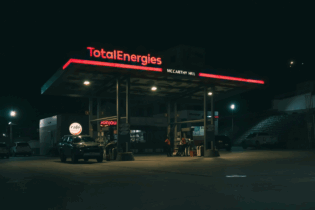Managing rising operating costs efficiently is a fine art and as costs increase, managing your vehicles and drivers effectively is the difference between companies surviving or making a profit.
Simon Foulds speaks to Hein Jordt, MD of Ctrack Fleet Management Operations; David Slotow, MD of Trackmatic; Louis Swart, MD of Drive Report; Steven Sutherland, sales director for South Africa and Africa at Mix telematics – Africa Fleet Solutions; and Greg Vercellotti, executive director of Dariel Solutions, to find out how operators can manage their fleets and drivers more efficiently. What trends can fleet managers expect? HJ As costs increase all over, the driver of a vehicle plays an ever-bigger role in building or breaking a transport operation. Considering the improvements in truck technology, vehicles are easier and safer to drive, more fuel efficient and more reliable, but the person behind the wheel has the ability to cancel out all these benefits. This is why more and more fleet management technologies focus on providing the transporters with insight into their drivers’ driving behaviour. How the vehicle is driven has a direct correlation to the fuel consumption, accidents, maintenance and down time. It remains critical for fleet operators not only to know where, how and when vehicles are being operated, but by who. Even more so with the long discussed and awaited AARTO system, which will force companies to prove who was driving a vehicle. There are proven technologies to identify drivers, but most of these solutions do come with a fairly intensive management process because drivers swop keys, loose or forget these keys. Therefore daily confirmation that each driver does have his allocated driver key is critical. Newer technology such as RFID and biometric driver identification has also been introduced to the market and, as with Dallas iButtons, RFID tags have similar management challenges. Although biometrics does sound like a fairly robust and foolproof solution, it also has its unique challenges to ensure the correct driver database is on the vehicle’s tracking device and that when vehicles are scheduled for servicing or repairs at third-party facilities such as dealerships, the vehicle can be started without being immobilised. This does place great importance on the operational movement of vehicles and operations. Immobilising vehicles to enforce the use of a form of driver identification has become a trend because it forces drivers to use their identification method and ensures all movement is recorded against the correct person, thus allowing transport operators to know where, when, how and by who their vehicles were used. Programming vehicles with unique categories and correlating their driver identification keys with the same or even multiple categories (depending on their license and operating qualifications) will ensure that only authorised people have access to specified vehicles. This is a key safety requirement in all mining operations. It has also become a requirement to control when vehicles can be used by implementing selective time immobilisation, i.e. if you have a valid driver identification key or biometric code – and even if you are allowed to drive or operate a specific category of vehicle – you can only do so in the specified operating time, thus preventing unauthorised use of vehicles during specified times. DS In our opinion, the latest trends are focusing on reducing costs and better managing drivers based on performance incentives rather than disciplinary actions on the use and management of the actual asset, namely the vehicle. Firstly, in terms of cost reduction, this is focused largely on driving down fuel and labour costs, which are undoubtedly the biggest cost components to operating a fleet. Using the historical analogy of the carrot and the stick, traditional track and trace systems have restricted customers and fleet operators to using only the stick. This is largely as a result of their strong focus on hardware in the vehicle and the limited focus on how the driver operates the vehicle, i.e. green band driving, harsh braking, idling, etc. We feel strongly that software is more dynamic and can be customised more specifically for client and operation requirements, making it easier to incentivise drivers on performance, such as delivering on time, getting out of the yard early and on time, returning before deadline, etc. These measures shift the focus to using the carrot, which aligns the driver with business KPIs. LS “The ever-changing economic environment has created a demand for efficient fleet management and the increasing use of analytics and advanced transportation control systems. The current trend is a demand for system integrations, such as telematics and driver monitoring, minimising the various problems associated with fleet management. These applications derived from technology that benefits the fleet owner and protects the driver greatly, and more innovations are expected in the years to come. SS There is a visible trend of fleet operators implementing a solution that offers minimal cost expenditure. The perception that ‘cost is all that matters’ when it comes to fleet technology shows how some operators are losing sight of the bigger picture and the delivery of true value. A fleet management solution that is a short-term fix won’t have the mechanics to evolve with the business. The outlook, then, limits productivity and sustainability. What may appear to be a concrete solution for a reasonable price often excludes key telematics tools such as essential customer care and consulting services. Contract duration warranties and bundled on-site service and support are also true enablers of an effective end-to-end fleet management system. GV Technology is shaping the future of many industries and the fleet management sector is no different. Best practice software can provide for an integrated management system for the industry and, as such, it is essential that such companies keep abreast of the latest technology as it drives productivity. And while the introduction of new technology can be disruptive in the beginning, it also has the ability to drive productivity and efficiency in a company and reduce operational costs in the long term. It’s about sustainability and future viability. Making the decision of when and how to go about implementing the required technology and equipment needed is a complex process involving both business and technical insight, but one that needs to be done. Investing in the right technology is one of the most critical aspects to any viable business. For businesses operating in such a lucrative and important sector, surely it’s worth it? What advice can you give regarding fleet management systems HJ I believe that the key for fleet owners and transport operators when selecting a fleet management solution is to know exactly what your operating challenges are and what outcome you expect to ensure you have control and keep control. Most fleet owners and transport operators have the same management areas, which can be categorised into safety, security, driving behaviour management, productivity and utilisation, operational control and asset management. All fleet and transport operations face all these management challenges, but some owners and operators have more focus in one area or another. I believe that you must identify your key focus areas and select a fleet management solution that can accurately and effectively provide the information and insight you require to assist you with making business decisions on how to change and improve your fleet or transport operation. Driving behaviour must be one of the critical management areas because it has a direct impact on costs such as fuel, repairs and maintenance, accidents and productivity. The driver decides to drive in a particular way and also which route he is going to take, how long he is going to load or off-load, or where he is going to stop to eat, rest or sleep, and his actions can create possible safety and/or security risks that can impact on productivity and load schedules. It is therefore critical that the fleet management systems must be able to provide accurate, reliable and proven driver identification technology. DS A traditional limited track and trace solution will no longer give fleet owners and operators sufficient insight into the efficient operation of their fleet. It no longer helps to know where my vehicle is or where it has been, but rather where it is RELATIVE to where it should be. Management systems also need to function as a consolidated repository of all fleet-related information. LS A needs analysis is the best way to get out of the starting blocks, and will aid in selecting the “Best of Breed”. Being obligated to provide an efficient and risk-free fleet management, a robust fleet management system plays a vital role in successful adoption, implementation and ease of integration with existing systems. A critical question to ask is about future-proofing and the impact on current equipment including pricing structures and packages for future development. SS Those successfully managing their fleet are not complacent. They’re identifying weak areas and changing things to bring about improved performance. In the case of driver behaviour monitoring, targeted driver training and incentive programmes are implemented on the back of knowing with accuracy where attention is required. Their drivers have bought into the solution – in fact, they realise they are supported by it. GV Managing the transportation in this industry is not only fundamental to maintaining a competitive advantage, but also to increasing profitability, reducing fraudulent activity and with the goods sometimes being on the road for days, essential to ensure that it is managed correctly from a supply and demand perspective as well. It is critical then that relevant considerations are made for businesses that have to juggle such concerns and one way of doing this is to turn to technology. Examining a software solution that is configured based on best industry practice and implemented into a goods receiving and delivery solution will ensure that fleets are managed effectively and that costs associated are tightly monitored and kept to the bare minimum.What advice do you have regarding driver monitoring technology?
HJ As pointed out, there are different types of driver monitoring technologies. It does not really matter which option you select as a fleet owner or transport operator – it will remain critical to implement, manage and control the driver information on a daily and weekly basis. Implementing the solution correctly will ensure 80% of the challenges are controlled and maintained. Drivers must be made aware of the consequences of not using or trying to bypass your selected driver monitoring technology and if regular feedback is provided on their use (or resistance to use) thereof, success in monitoring drivers will become easier. It will remain a daily challenge managing drivers. Driver monitoring technology is the tool to provide the information and insight, but if the information is not used daily, you may as well not implement it. Driver identification and driver monitoring has assisted many fleet owners, transports operators and drivers to protect themselves by challenging traffic infringement problems, accident claims, non-compliance to SLAs and proof of service. Drivers must be encouraged to challenge each other in improving their driving styles and scores. DS Driver monitoring focus should shift from traditional practices where the driver is managed based on his use of the asset to one where the driver is managed on a basis consistent to how the business is managed in the delivery of service to the client. This would be more along the lines of deliveries on time, revenue per kilometre versus cost per kilometre, wasted kilometres travelled (actual versus optimal kilometre). “ LS A driver monitoring system should assist in gaining valuable business insight into driving behaviour. It must allow for business rules and received notifications of driving violations and behaviour to control the fleet without spending excessive time poring over data reports. A similar approach can be taken when sourcing a fleet management system to ensure the best system for the business requirements and future growth had been sourced.” SS Monitoring and improving driver behaviour is the biggest factor in reducing fuel costs. On average, a saving of 10% on fuel costs is gained by rectifying driving habits like excessive idling, over-speeding and over-revving. Harsh braking – also monitored – is often linked to motor accidents as well as unnecessary wear-and-tear on vehicles. An in-cab driving aid provides audio and visual alerts that correspond to events of over-revving, excessive idling, harsh braking, harsh acceleration and speeding. Should the driver not rectify the bad habit(s), an event is recorded. With 24-hour access to vehicle and driver data – and associated reports and analytics – fleet managers can identify trends and problem areas. This enables them to make informed decisions that boost the performance of their fleet on many levels. Reliable and intuitive software platforms make this process accurate and simple. Your advice for cross border monitoring? HJ If it is true that transport is a tough business, I think that transport across our borders into our neighbouring countries and even higher up into Southern Africa must be one of the toughest, most demanding and challenging businesses to be involved in. Although the opportunities and rewards are plenty, the risks are just as many – or even more. Infrastructure (i.e. roads, fuel, safe resting places), crime (i.e. theft of cargo, fuel, assets, bribery and corruption), absence of time management (i.e. waiting time at border posts, loading and offloading sites) and social challenges are just some of the hurdles faced by every cross-border operator. International roaming is available on the various GSM service providers throughout Southern Africa, providing operators with the possibility of real-time visibility of their fleets and, as coverage improves in most countries, will allow further and longer access and visibility of their vehicles and drivers. The real-time visibility does, however, come at a fairly high price as international roaming data and SMS charges are currently very expensive. Transporters need to carefully consider the price-to-function value. There are, however, alternative reporting channels such as selective SMS data transmissions on pre-selected priority information or satellite communications options through low-orbiting satellites, which could reduce the costs of cross-border vehicle monitoring. Much the same applies to cross-border operators as to normal operators – control and management of drivers will be critical to ensure low as possible costs, improved turnaround time adherence resulting in more loads and ultimately more income. DS The use of an integrated in-vehicle communication device that has turn-by-turn navigation, integrated route and order information, and two-way messaging makes it affordable and easy to better work with drivers in remote areas and cross border. LS A robust driver monitoring system, allowing for the coaching of the driving behaviour on return to South Africa, would be the best advice for a cross-border transport operation. Establishing a culture of safe driving through the coaching and skills development prior to the trip across the borders will eventually reduce the risk when the vehicle and trailers are operated outside the borders of South Africa. Ninety per cent of all driving risk is due to the behaviour of the driver, and addressing the probability of the risk through skills development and coaching reduces the risk exposure and enhancing the effectiveness of drivers. SS We live in an age of ‘keeping up’ and progress – ironically – waits for no one. The reality for fleet operators is that if they don’t keep up with current fleet management technology, they’ll soon realise they’re under-equipped. And ignoring the nagging demands of tomorrow may very well mean business improvement is merely a mirage in the road ahead. The same applies to cross-border operators that also need to monitor their trucks, trailers and drivers once they leave the South African border. Prominent costs like fuel, maintenance and tyres are directly proportionate to the number of kilometres travelled. Apart from these costs, cross-border operators also need to consider the risks associated with operating outside of the country’s borders. It is usually because of these risk factors that operators tend to substitute detailed fleet performance telematics data for positional information. The best advice on this topic would be “don’t compromise”. First of all, because you can least afford to and secondly because you don’t have to. The fact that one’s business extends beyond the boundaries of one’s home country should never be a reason to compromise on full-featured premium business telematics data. In fact, if your business involves cross-border operations, you can more than likely increase your profits substantially through the tangible business benefits derived from a premium fleet management system. It has long been believed that cross-border operations require satellite-based tracking systems in order to ensure accurate vehicle positional information. Although this is true to some degree, it is not true that you cannot get an efficient and yet cost-effective integrated system that will give you both satellite accuracy as well as detailed fleet telematics even in those cases when GSM coverage is compromised. Legacy-technology-based offerings dictated that you ran duplicate systems that obviously attracted, in some instances, more than just duplicated infrastructure and service fees. Today’s integrated systems leverage both technologies – GSM and satellite. This translates into a cost-effective solution. Also, with GSM coverage constantly improving across Africa, the reliance on satellite is diminishing and along with it the excessive communication costs. Integrated systems are more cost effective, offer a single user interface and mean operators have one service provider. Having all fleet data in one place is another element that increases efficiency.







